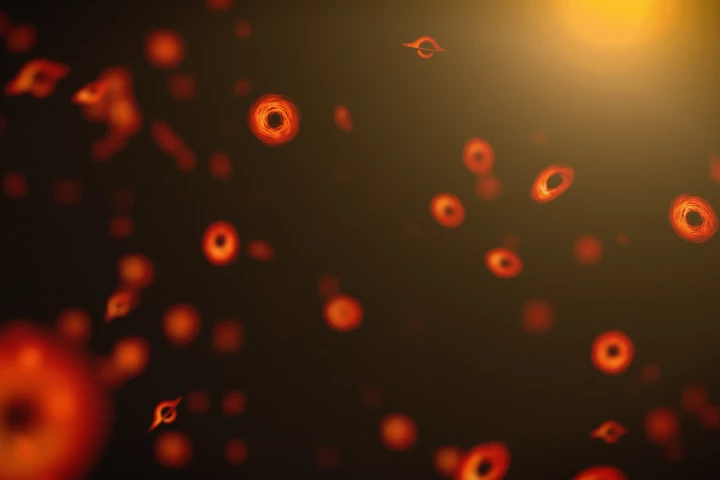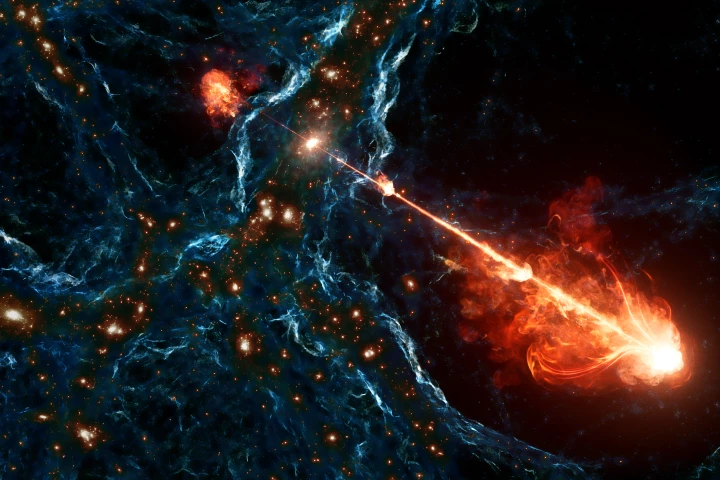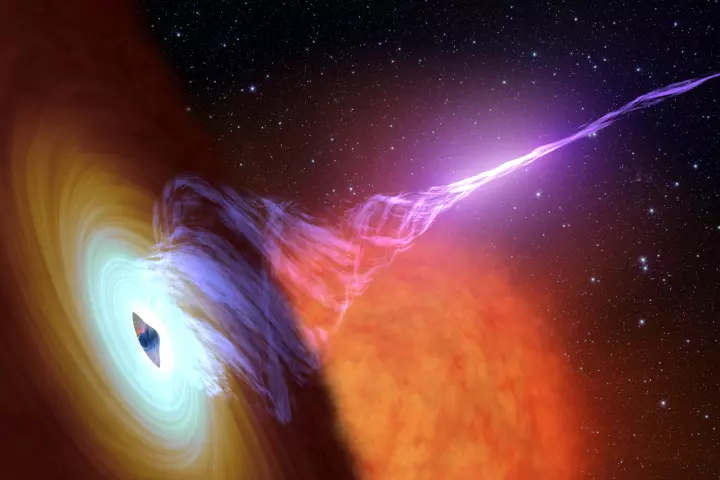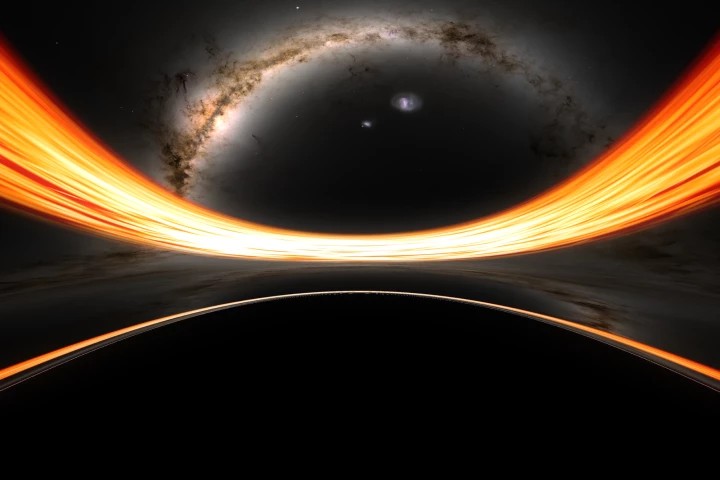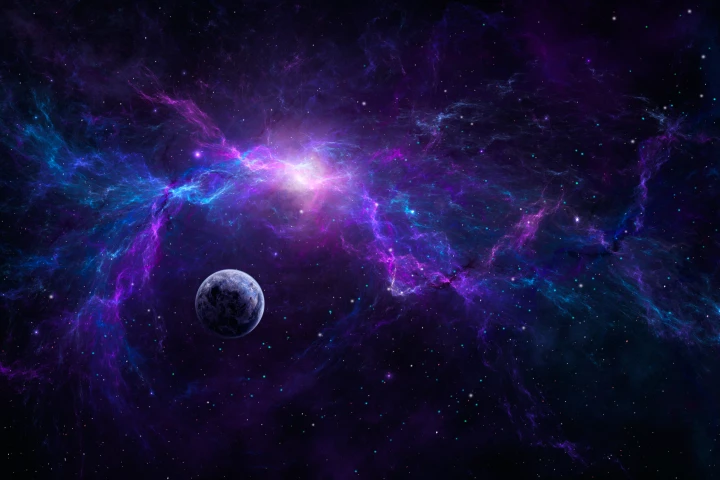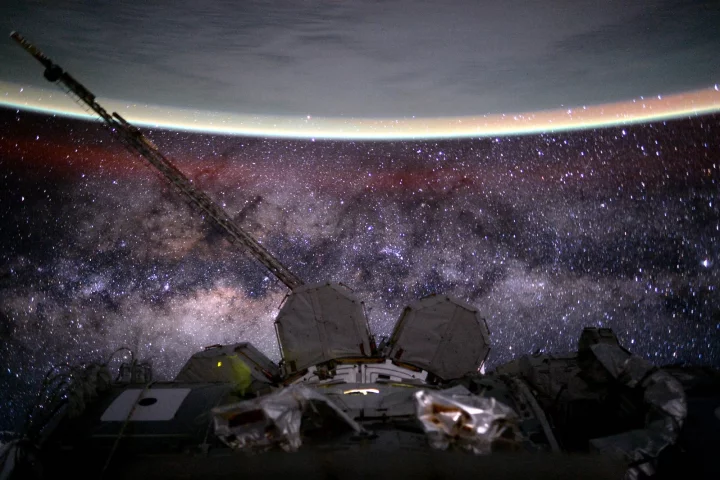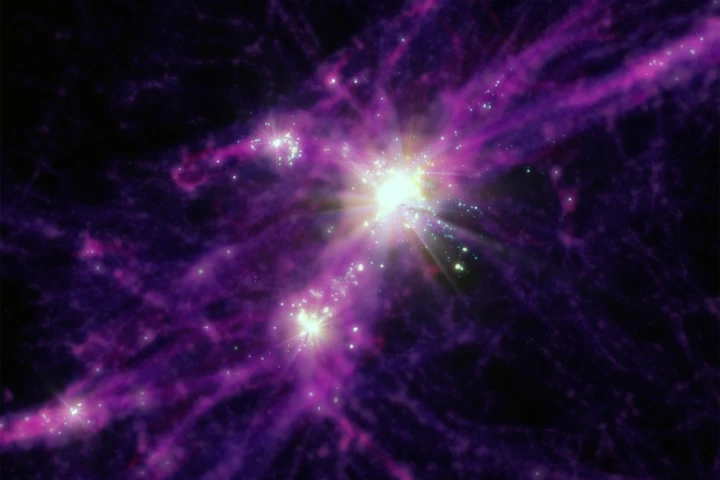Astrophysics
-
To find black holes we usually have to look thousands of light-years away. But a new study suggests we could find evidence of them right here on Earth, as tiny tunnels they’ve carved out in rocks or old buildings.
-
Astronomers have spotted an absolutely colossal cosmic chimney that stretches as far as 140 Milky Ways lined up side by side. These jumbo jets are being blasted from a supermassive black hole.
-
Supermassive black holes have been known to belch gigantic beams of plasma into space – and now scientists have managed to recreate these fireballs in a lab at CERN.
-
What would it look like to fall into a black hole? It’s a question basically everyone has pondered, and now NASA has finally given us a first-person view of the experience with scientifically-accurate visualizations produced by a supercomputer.
-
Look at the development of Earth-bound tech and you'll find fire at the heart of it, says a duo of researchers. And what does fire need to burn? Oxygen, whose chemical signature could provide clues to technological societies on worlds beyond our own.
-
Researchers from MIT and the University of Birmingham (UB) believe that they've cracked the formula for detecting habitable planets using currently available technology. It all has to do with an exoplanet's levels of carbon dioxide and ozone.
-
From where “love” is felt in the body, to the scientific value of giant piles of bird poop, and talking to whales as practice for understanding aliens, here are the top 10 weirdest science stories of 2023.
-
Black holes are famous for gobbling up everything – but could they ever be swallowed whole? A new study suggests stars could capture very small black holes. There might even be a way to find them, and if so, they could help us understand dark matter.
-
One of the biggest cosmological mysteries centers on a discrepancy in how fast the universe is expanding. A new study comes to an intriguing solution by applying a modified theory of gravity and an unsettling “supervoid” that our galaxy resides in.
-
Next month, NASA will place a new piece of equipment on the International Space Station. It will examine a phenomenon known as Earth's airglow for signs of weather-produced waves that can reach the mesopause and disrupt satellite communications.
-
Our solar system officially houses eight planets, but some scientists say there could be a ninth hiding on the fringes. Now, a new study has found the oddities could be explained by modified theories of gravity, an alternative idea to dark matter.
-
The James Webb Space Telescope can look farther back in space and time than ever before – and it’s revealed puzzling galaxies that seem to be too advanced for their age. Now astronomers have proposed a new explanation for them – starburst galaxies.
Load More
